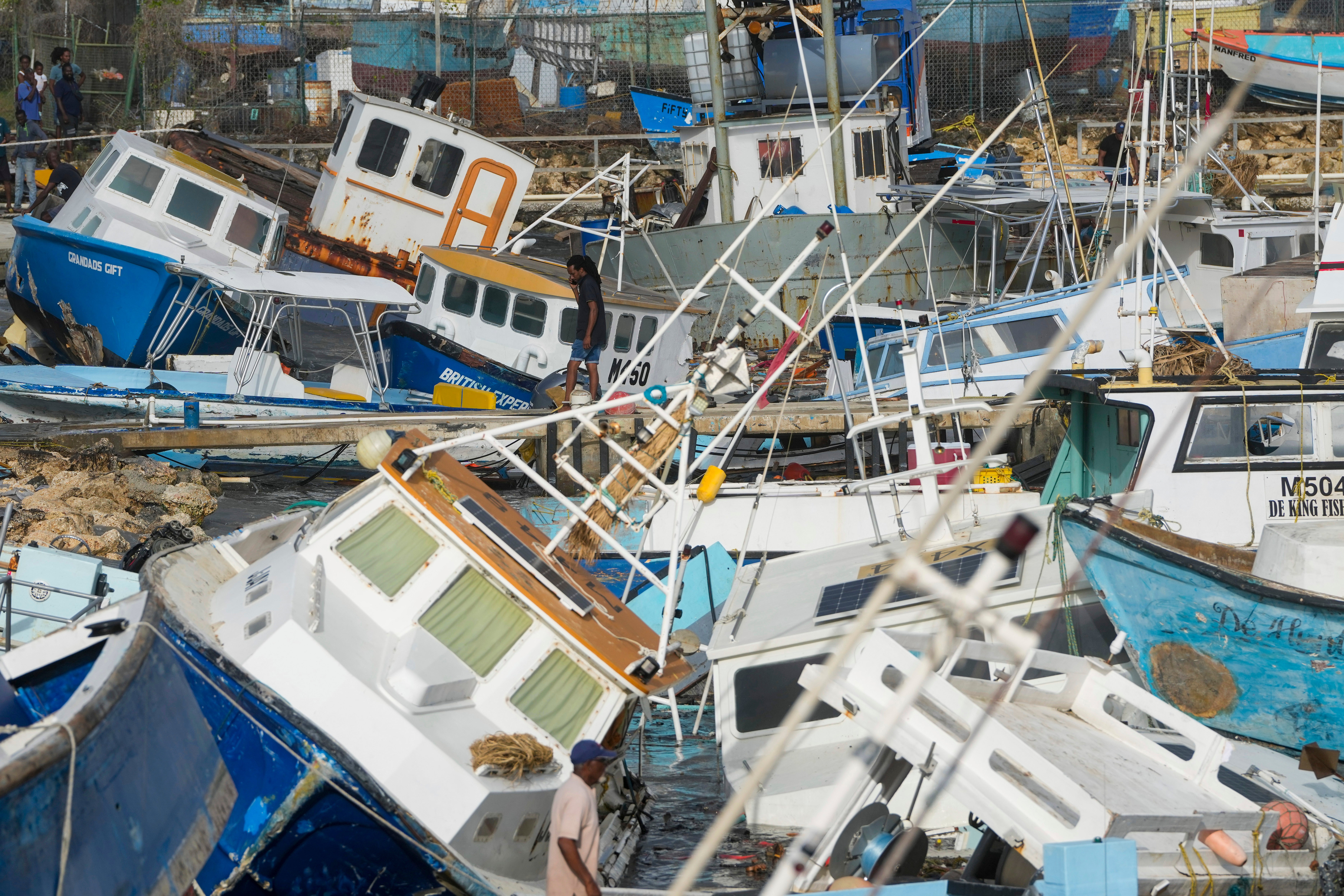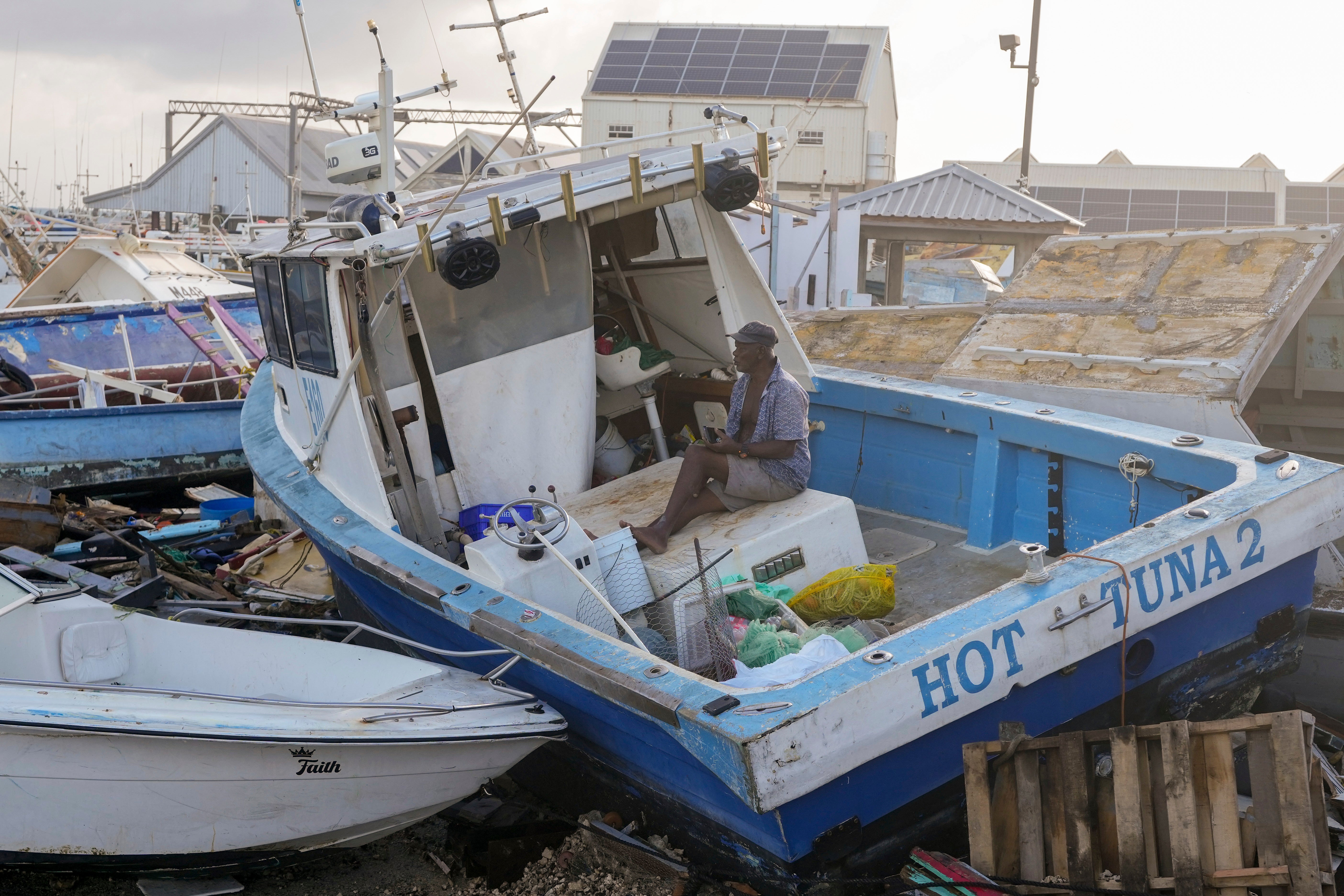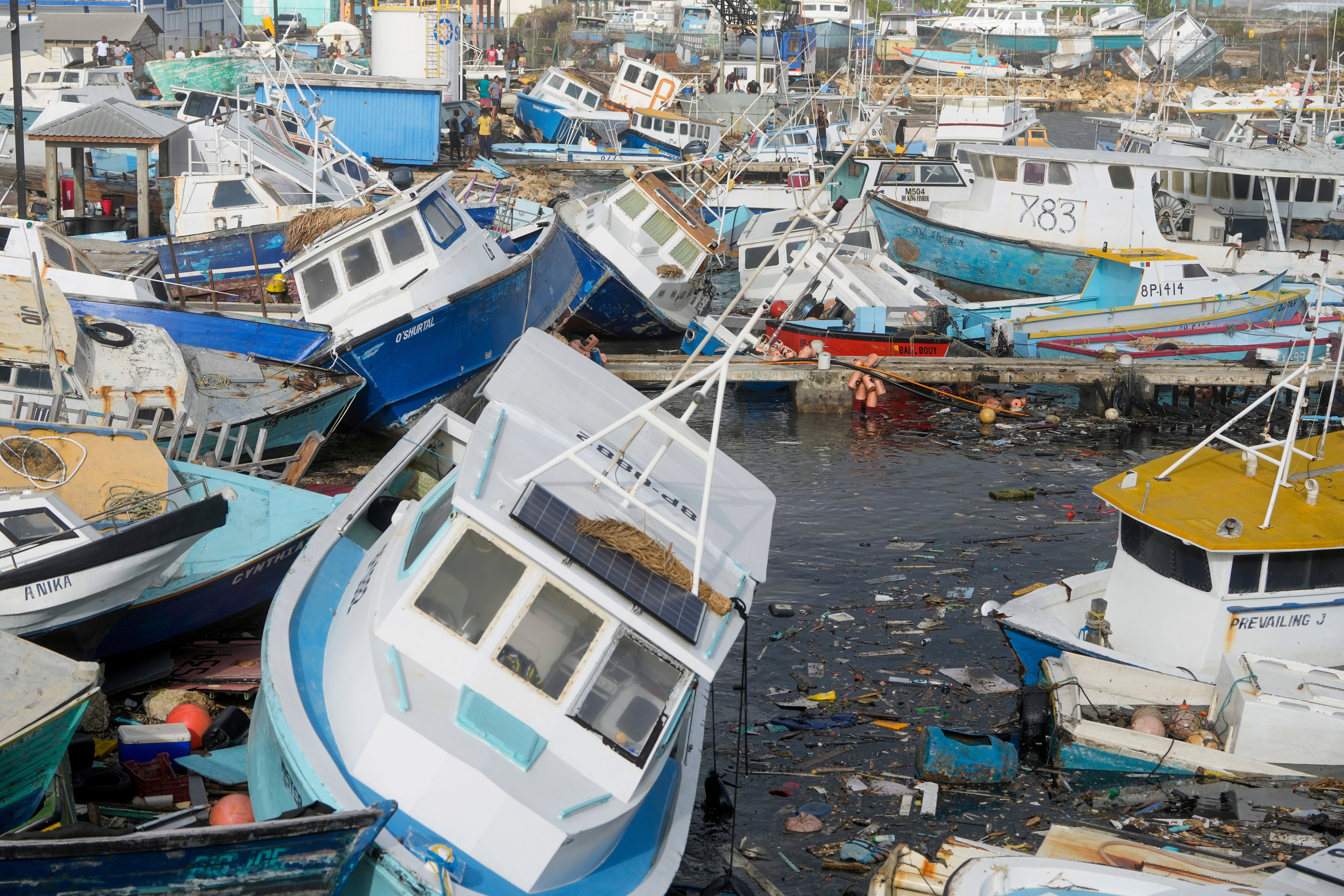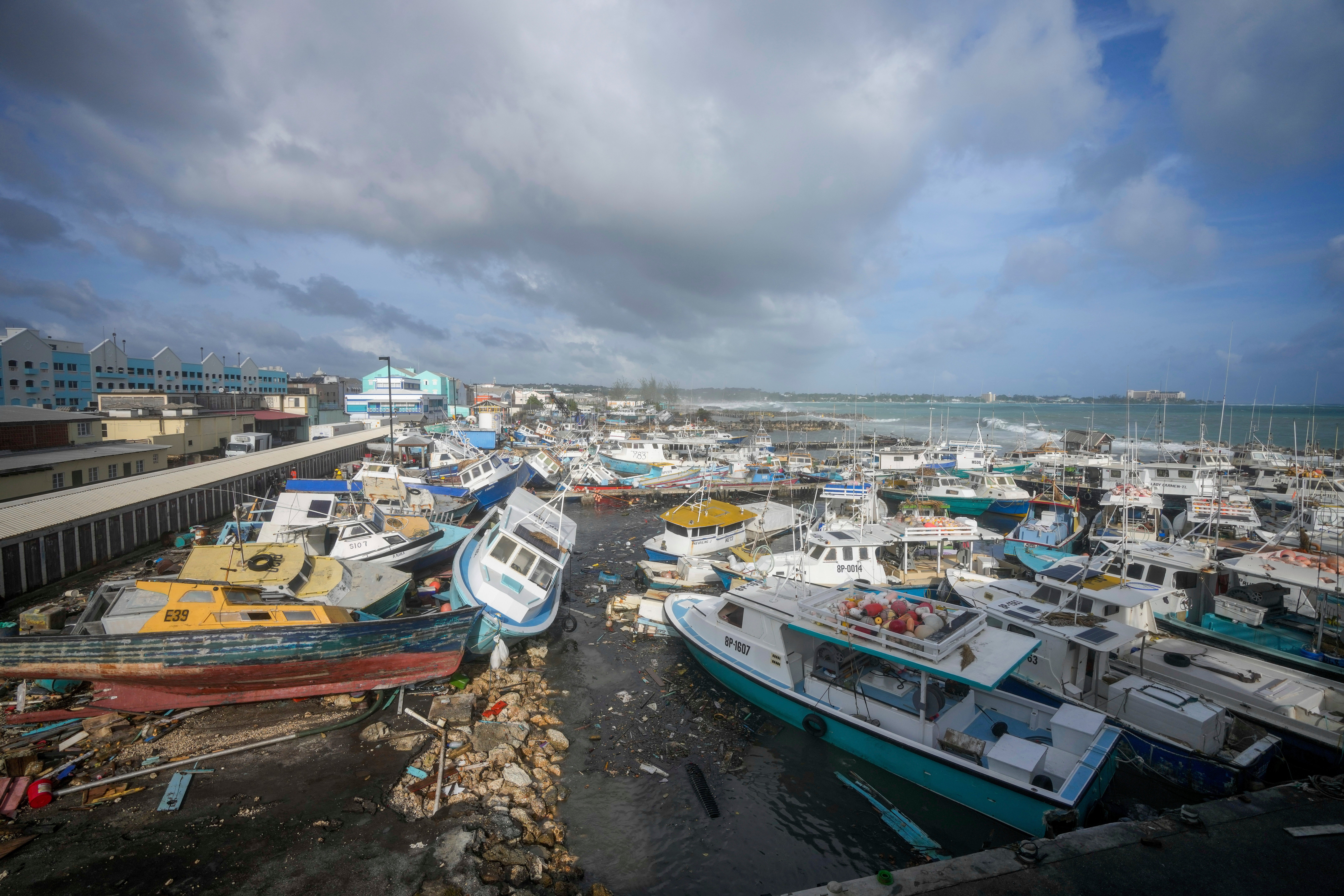Hurricane Beryl rips through open waters after devastating parts of Caribbean
Beryl is the earliest Category 5 storm ever to form in the Atlantic

Hurricane Beryl roared through open waters on Tuesday as a monstrous Category 5 storm on a path that would take it near Jamaica and the Cayman Islands after earlier making landfall in the southeast Caribbean, killing at least two people.
A hurricane warning was in effect for Jamaica and a hurricane watch for Grand Cayman, Little Cayman and Cayman Brac. Beryl was forecast to start losing intensity on Tuesday but still to be near major hurricane strength when it passes near Jamaica on Wednesday, the Cayman Islands on Thursday and Mexico's Yucatan Peninsula on Friday, according to the National Hurricane Center.
Beryl is the earliest Category 5 storm ever to form in the Atlantic, fueled by record warm waters.
Early Tuesday, the storm was located about 370 miles (595 kilometers) southeast of Isla Beata in the Dominican Republic. It had top winds of 165 mph (270 kph) and was moving west-northwest at 22 mph (35 kph).

“Beryl remains an impressive Category 5 hurricane,” the National Hurricane Center said.
A tropical storm warning was in place for the entire southern coast of Hispaniola, an island shared by Haiti and the Dominican Republic.
As the storm barreled through the Caribbean Sea, rescue crews in the southeast Caribbean fanned out across the region to determine the extent of the damage that Hurricane Beryl inflicted after landing on Carriacou, an island in Grenada, as a Category 4 storm.
One person was reported killed in Grenada and another in St. Vincent and the Grenadines, officials said.

An emergency team was expected to travel to Carriacou on Tuesday morning.
"The situation requires our immediate attention, and all efforts must be made to support our sister islands," said Grenadian Prime Minister Dickon Mitchell.
Meanwhile, Ralph Gonsalves, prime minister of St. Vincent and the Grenadines, promised to rebuild the archipelago in a statement early Tuesday. He noted that 90% of homes on Union Island were destroyed, and that “similar levels of devastation” were expected on the islands of Myreau and Canouan.
The last strong hurricane to hit the southeast Caribbean was Hurricane Ivan 20 years ago, which killed dozens of people in Grenada.
Beryl has broken several records, including marking the farthest east that a hurricane has formed in the tropical Atlantic in June, according to Philip Klotzbach, Colorado State University hurricane researcher.

The storm strengthened from a tropical depression to a major hurricane in just 42 hours, which only six other Atlantic hurricanes have done, and never before September, according to hurricane expert Sam Lillo.
Beryl is the second named storm in the Atlantic hurricane season, which runs from June 1 to Nov. 30. Earlier this month, Tropical Storm Alberto made landfall in northeast Mexico and killed four people.
The National Oceanic and Atmospheric Administration predicted the 2024 hurricane season would be well above average, with between 17 and 25 named storms. The forecast called for as many as 13 hurricanes and four major hurricanes.
An average Atlantic hurricane season produces 14 named storms, seven of them hurricanes, and three major hurricanes.
Bookmark popover
Removed from bookmarks